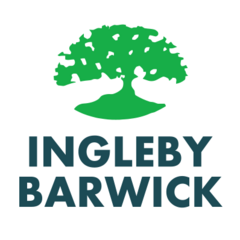Ingleby Barwick
| Ingleby Barwick | |
|---|---|
 Official logo for the community of Ingleby Barwick |
|
| Ingleby Barwick shown within North Yorkshire | |
| Population | 21,045 |
| OS grid reference | NZ445140 |
| Civil parish |
|
| Unitary authority |
|
| Ceremonial county | |
| Region | |
| Country | England |
| Sovereign state | United Kingdom |
| Post town | STOCKTON-ON-TEES |
| Postcode district | TS17 |
| Dialling code | 01642 |
| Police | Cleveland |
| Fire | Cleveland |
| Ambulance | North East |
| EU Parliament | North East England |
| UK Parliament |
|
Ingleby Barwick /ˈbɑːrɪk/ is a large private residential housing estate and civil parish built on what was the southern perimeter of Thornaby airfield in the borough of and ceremonial county of North Yorkshire, England. In 2011, the population was 21,045. The estate is enclosed by water to the west, north and east. It was officially opened in 1981 by the mayor of Langbaurgh.
Although the development of Ingleby Barwick, as the housing estate which is present today, did not start until the late 1970s, the land has been occupied for thousands of years. Ingleby Barwick has a ceremonial Coat of Arms. The arms contain a representation of the three rivers that run around Ingleby Barwick. It also depicts mill-rinds which are an historical link to the Turner family, who used to own the land which now forms Ingleby Barwick. The crest shows a Teal bird which refers to a horse named Teal, trained at Middleham by Captain Neville Crump, which won the Grand National in 1952.
There are traces of human occupation from as far back as the Stone Age. Work at Quarry farm has discovered prolific concentrations of multi period flintwork along the South Bank of the River Tees in this area. Traces of Iron Age field patterns were discovered, also at Quarry Farm. A salvage excavation was carried out in the Windmills Fields area of the town at the end of 1996. Five individual burials were found along with a wooden cist, these finds were accompanied by objects containing stone, jet and copper alloy of high status. This site was considered of European significance as it threw new light on the settlement of the area in the Bronze age and highlighted a change in tradition of burial traditions and trade networks at this time.Roman settlement is also apparent in the town and a Roman Villa circa 200 AD, perhaps the most northerly in UK, was excavated in part. This has been preserved as a grassed area in The Forum area of Ingleby Barwick. The "official" report on the excavation was published in 2013 with the title "A Roman Villa at the Edge of Empire" ( )
...
Wikipedia

